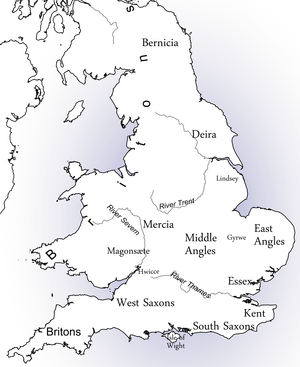Essex
| Author:Laxman Burdak, IFS (R) |

Essex (ऐस्सेक्स) is a county in the East of England which originated as the ancient Kingdom of Essex and one of the seven kingdoms, or heptarchy, that went on to form the Kingdom of England.
Variants
Location
One of the home counties, it borders Suffolk and Cambridgeshire to the north, the North Sea to the east, Hertfordshire to the west, Kent across the estuary of the River Thames to the south, and Greater London to the south and south-west.
The county town is Chelmsford, which is one of two cities in the county, the other being Southend-on-Sea which was granted city status on 1 March 2022. Colchester will become a city later in 2022 as part of the Queen’s Platinum Jubilee. For the purposes of government statistics, Essex is placed in the East of England region.
Origins
The name Essex derives from the Kingdom of the East Seaxe or Kingdom of Essex which was traditionally founded by Aescwine in AD 527, occupying territory to the north of the River Thames and east of the River Lea.
In AD 825 it became part of the Kingdom of Wessex and was later ceded under the Treaty of Wedmore to the Danelaw under the Kingdom of East Anglia. In AD 991 the Battle of Maldon resulted in complete defeat of the Anglo-Saxons by the Vikings, and is commemorated in the poem The Battle of Maldon.
The extent of Essex
There are four definitions of the extent of Essex, the widest being the ancient county. Next largest is the former postal county, followed by the ceremonial county, with the smallest being the administrative county—the area administered by the County Council, which excludes the two unitary authorities of Thurrock and Southend-on-Sea, and the areas administered by the Greater London Authority.
The ceremonial county occupies the eastern part of what was, during the Early Middle Ages, the Anglo-Saxon Kingdom of Essex. As well as rural areas, the county also includes: London Stansted Airport, the new towns of Basildon and Harlow, Lakeside Shopping Centre, the port of Tilbury, and the City of Southend-on-Sea.
History
Essex evolved from the Kingdom of the East Saxons, a polity which is likely to have its roots in the territory of the Iron Age Trinovantes tribe.[1]
Kingdom of Essex
The Kingdom of the East Saxons (Old English: Ēastseaxna rīce; Latin: Regnum Orientalium Saxonum), referred to as the Kingdom of Essex /ˈɛsɪks/, was one of the seven traditional kingdoms of the Anglo-Saxon Heptarchy.[a] It was founded in the 6th century and covered the territory later occupied by the counties of Essex, Middlesex, much of Hertfordshire and (for a short while) west Kent. The last king of Essex was Sigered of Essex and in 825, he ceded the kingdom to Ecgberht, King of Wessex.
Extent: The Kingdom of Essex was bounded to the north by the River Stour and the Kingdom of East Anglia, to the south by the River Thames and Kent, to the east lay the North Sea and to the west Mercia. The territory included the remains of two provincial Roman capitals, Colchester and London.
The kingdom included the Middle Saxon Province,[2] which included the area of the later county of Middlesex, and most if not all of Hertfordshire[3] Although the province is only ever recorded as a part of the East Saxon kingdom, charter evidence shows that it was not part of their core territory. In the core area they granted charters freely, but further west they did so while also making reference to their Mercian overlords. At times, Essex was ruled jointly by co-Kings, and it thought that the Middle Saxon Province is likely to have been the domain of one of these co-kings.[4] The links to Essex between Middlesex and parts of Hertfordshire were long reflected in the Diocese of London, re-established in 604 as the East Saxon see, and its boundaries continued to be based on the Kingdom of Essex until the nineteenth century.
The East Saxons also had intermittent control of Surrey.[5] For a brief period in the 8th century, the Kingdom of Essex controlled west Kent.
The modern English county of Essex maintains the historic northern and the southern borders, but only covers the territory east of the River Lea, the other parts being lost to neighbouring Mercia during the 8th century.[6]
In the Tribal Hidage it is listed as containing 7,000 hides.
See also
References
- ↑ Kings and Kingdoms of Early Anglo-Saxon England, p46. Barbara Yorke. Yorke makes reference to research by Rodwell and Rodwell (1986) and Bassett (1989)
- ↑ Keightley, Thomas (1842). The History of England: In two volumes. Longman.
- ↑ Yorke, Barbara (2002). Kings and Kingdoms of Early Anglo-Saxon England. Routledge. pp. 47–52. ISBN 978-1-134-70725-6.
- ↑ Kings and Kingdoms of early Anglo-Saxon England, Chapter 3, Barbara Yorke, 1990, Routledge, ISBN 0-415-16639-X
- ↑ Baker, John T. (2006). Cultural Transition in the Chilterns and Essex Region, 350 AD to 650 AD. Univ of Hertfordshire Press. p. 12. ISBN 978-1-902806-53-2.
- ↑ Yorke, Barbara (2002). Kings and Kingdoms of Early Anglo-Saxon England. Routledge. pp. 47–52. ISBN 978-1-134-70725-6.

